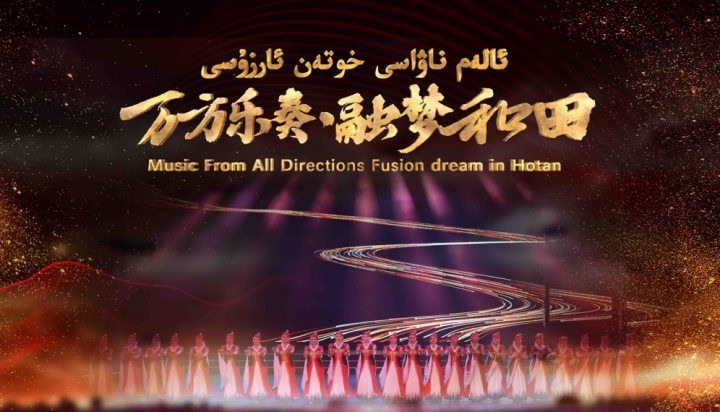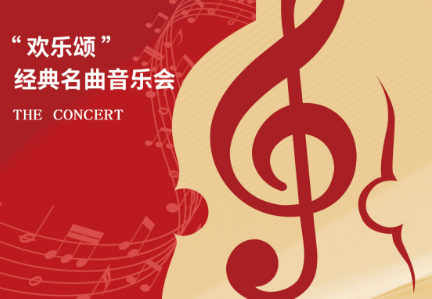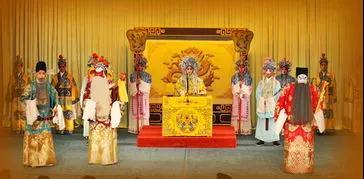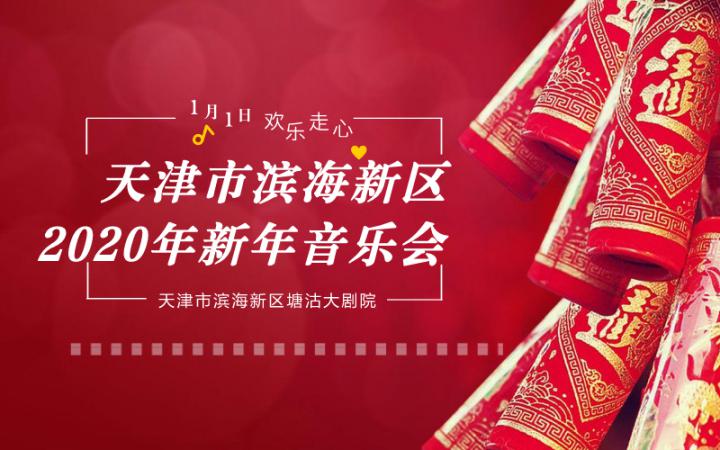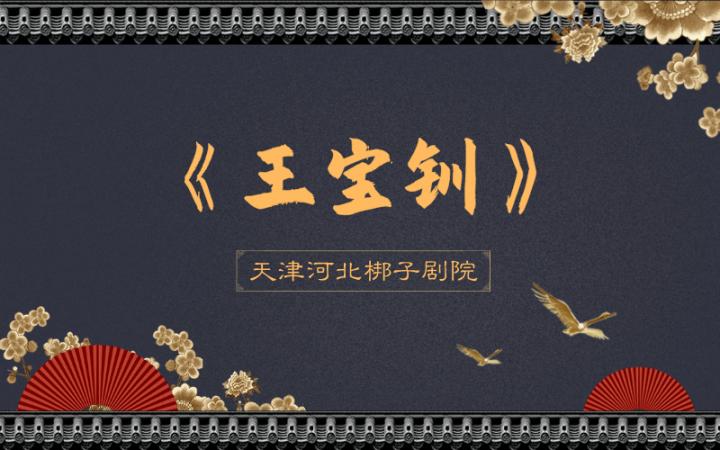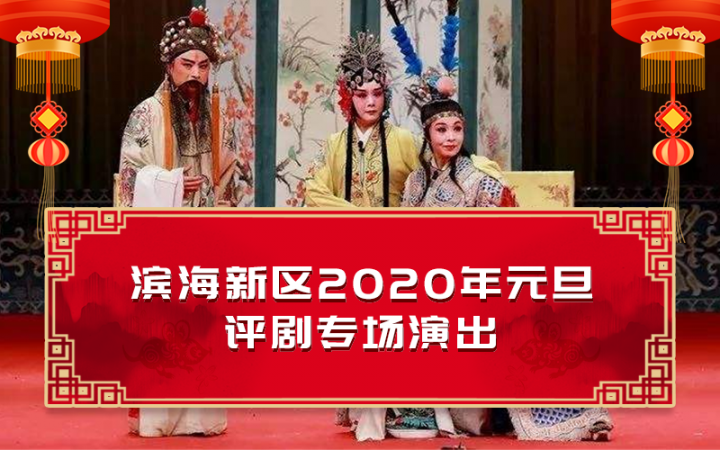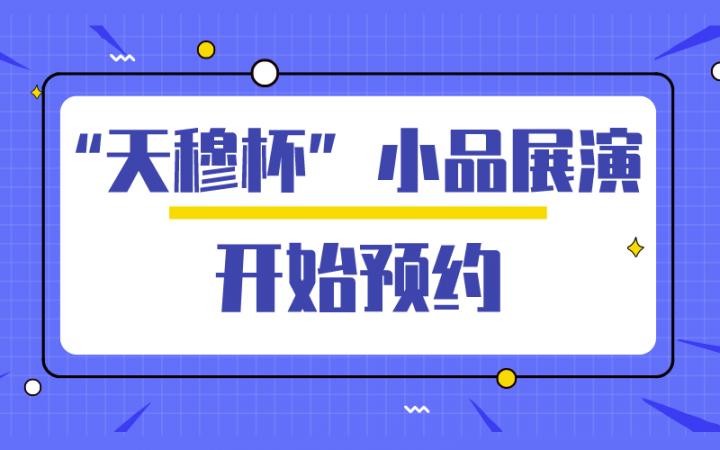
1月10日19:30,天津茱莉亚室内乐团将呈现2025汇聚音乐节(Festival Connect 2025)开幕音乐会。届时,音乐家们将带来埃德加·瓦雷兹(Edgard Varèse),以及克洛德·德彪西(Claude Debussy)和周文中(Chou Wen-Chung)的代表曲目。其中,天津茱莉亚学院打击乐师生将携手新加坡国立大学杨秀桃音乐学院、韩国艺术综合大学和台北艺术大学的打击乐师生联袂演出两首打击乐重奏作品。同时,天津茱莉亚特邀多位民乐演奏家演绎周文中的民乐作品《丝竹苍松》。这场音乐会彰显了汇聚音乐节关注音乐演变和文化对话的初衷,为中外音乐师生搭建了一个交流学习现当代音乐的平台。
【拓展阅读】
开幕音乐会
OPENING CONCERT
天津茱莉亚室内乐团
Tianjin Juilliard Ensemble
演出曲目
PROGRAM
埃德加·瓦雷兹(1883-1965)
《电离》,为十三件打击乐器而作
陈镱中*,打击乐
冯梓泰+,打击乐
黄传凯*,打击乐
金佳瑗^,打击乐
金池明^,打击乐
赖若葳*,打击乐
李苡薰°,打击乐
Thananan Rochanakit+,打击乐
沈沛颖°,打击乐
吴雨泽+,打击乐
谢汶睿+,打击乐
尹英薰^,打击乐
张宇涵°,打击乐
沈逸文,指挥
EDGARD VARÈSE (1883-1965)
Ionisation, for Thirteen Percussionists
Yu-Han Chang°, Percussion
Yi-Chung Chen*, Percussion
Zitai Feng+, Percussion
Gawon Kim^, Percussion
Jeremy Ng Chuan Kai*, Percussion
Ji Myeong Kim^, Percussion
Jo-Wei Lai*, Percussion
Yi-Hsun Lee°, Percussion
Thananan Rochanakit+, Percussion
Pei-Ying Shen°, Percussion
Wenrui Xie+, Percussion
Yuze Wu+, Percussion
Yeonghoon Yoon^, Percussion
Yiwen Shen, Conductor
周文中(1923-2019)
《谷应》,为打击乐四重奏而作(1989)
吴思珊Ψ,打击乐
韩文卿,打击乐
金恩惠±,打击乐
林俊扬◊,打击乐
司徒健,指挥
CHOU WEN-CHUNG (1923-2019)
EchoesFrom the Gorge, for Percussion Quartet (1989)
Shih-san WuΨ, Percussion
JuneHahn, Percussion
Eunhye Kim±, Percussion
Joachim Lim◊, Percussion
Kin Szeto, Conductor
埃德加·瓦雷兹
《八蕊花》
盖尔盖伊·伊采什,长笛
刘明嘉,双簧管
周相宇,单簧管
佑川嵩雄+,巴松管
韩小光,圆号
李·艾伦,长号
谢尔盖·图特金,小号
纪宇遥+,低音提琴
沈逸文,指挥
EDGARD VARÈSE
Octandre
Gergely Ittzés, Flute
Mingjia Liu, Oboe
Xiangyu Zhou, Clarinet
Takao Sukegawa+, Bassoon
Han Xiaoguang, Horn
Lee Allen, Trombone
Sergey Tyuteykin, Trumpet
Yuyao Ji+, Double Bass
Yiwen Shen, Conductor
中场休息
INTERMISSON
周文中
《丝竹苍松》(2008)
范临风',竹笛
张佳理',管子
侯越',笙
李佳',琵琶
邱霁',古筝
张西木',鼓
胡彪',指挥
CHOU WEN-CHUNG
Eternal Pine, for Di, Guan, Sheng, Pipa, Zheng, and Gu(2008)
Linfeng Fan', Di (Chinese Flute)
Jiali Zhang', Guanzi
Yue Hou', Sheng
Jia Li', Pipa
Ji Qiu', Zheng
Ximu Zhang', Gu (Chinese Drum)
Biao Hu', Conductor
埃德加·瓦雷兹
《密度21.5》(1946)
盖尔盖伊·伊采什,长笛
EDGARD VARÈSE
Density 21.5(1946)
Gergely Ittzés, Flute
克洛德·德彪西(1862-1918)
《神圣与世俗的舞蹈》
黄立雅,竖琴
唐伟思,小提琴
钱悦,小提琴
李汉娜,中提琴
金兗珍,大提琴
纪宇遥+,低音提琴
CLAUDE DEBUSSY (1862-1918)
Danse sacrée et Danse profane
Li-Ya Huang, Harp
Tarn Travers, Violin
Yue Qian, Violin
Hanna Lee, Viola
Yeonjin Kim, Cello
Yuyao Ji+, Double Bass
* 杨秀桃音乐学院学生|Yong Siew Toh Conservatory of Music Student
°台北艺术大学学生|Taipei University of the Arts Student
^ 韩国国立艺术大学学生|Korea National University of Arts Student
+ 天津茱莉亚学院研究生|Tianjin Juilliard School Graduate Student
Ψ台北艺术大学教师|Taipei University of the Arts Faculty
± 韩国国立艺术大学教师|Korea National University of Arts Faculty
◊ 杨秀桃音乐学院教师|Yong Siew Toh Conservatory of Music Faculty
' 客座艺术家|Guest Artist
按姓氏首字母顺序排列
Names arranged in alphabetical order
本场演出曲目以现场演奏为准
The program is subject to change
埃德加·瓦雷兹与周文中
EDGARD VARÈSE AND CHOU WEN-CHUNG
曲目介绍由尼科洛·安森博士撰写
Program notes by Dr. Niccolo Athens
除了一首不太重要的歌曲外,埃德加·瓦雷兹所有早期作品都因一场仓库火灾就此失传。回看这段历史,这似乎是最恰当的安排(皮埃尔·布列兹怀疑瓦雷兹本人舍弃了自己的作品)。处于创作成熟期的瓦雷兹是20世纪音乐界强硬不屈的人物之一,他几乎是按照自己的方式在重新创造音乐。他一生都热爱着德彪西的音乐,那些遗失的早期作品可能运用了类似的风格(保留下来的那首曲子似乎也证实了这一假设)。不过,从表面上看,德彪西的影响在他成熟时期的作品里几乎难觅踪迹。如果瓦雷兹的成熟作品有任何直接影响来源的话,那就是伊戈尔·斯特拉文斯基早期的新原始主义音乐。在斯特拉文斯基向新古典主义迈进(或在有些人眼里是一种退缩)之后的很长一段时间里,瓦雷兹都在坚持不懈地探索新原始主义中的建构主义元素,他的极致钻研是斯特拉文斯基都从未达到过的程度。然而,他为这种坚定不移的纯粹愿景也付出了代价,作品反响平平且产出量很低:瓦雷兹只留下了十几部已完成的作品。尽管如此,这些也足以为他建立起一个独特的创作身份。
瓦雷兹精神的背后,是那时的现代主义者秉承着乐观信念无怨无悔探索的胜景。他的音乐初听时尖锐刺耳,但其所有作品都洋溢着乐观的生命力。瓦雷兹不像许多后继者那样把大胆的原创性置于一切之上,而是目标清晰,坚定不移地想要把脑中对声音的狂想付诸现实。即使他的音乐极度追求刺耳的不协和音于音色自由,但每一个音乐决定都是经过深思熟虑的。反复试验、模棱两可、优柔寡断和异想天开的实验对他而言是不可容忍的,他的完成作品中也完全没有涉及到这些。他曾说:“我的实验最终被扔进了废纸篓"。如果要重塑音乐概念为“有组织的声音”,并将所有传统上的音乐知识框架抛之脑后,那作曲家与声音本身的接触就必须比以往更深入、更新颖。瓦雷兹对打击乐器和电子音乐情有独钟,它们相对不受音乐传统束缚。
由此可见,他与德彪西之间还有一层更为深厚的联系:瓦雷兹的艺术旅程或许可以被理解为德彪西试图抛弃传统束缚并重新接触音乐材料的一种更为极端、棱角分明的做法。
一位出生于1920年在山东长大的少年与这位音乐巨匠之间产生了历史碰撞,这听起来似乎有些不可思议。诚然,回顾周文中的职业生涯,许多方面都令人惊叹,尤其是他与瓦雷兹的关系。周文中出身于一个知识分子家庭,是二十世纪初期的几十年里最后一批留洋求学的中国青年之一。与原计划赴美学习心理学的作曲家前辈黄自类似,周文中一开始也是打算学习其他科目的。当他作为一名年轻的建筑系学生来到美国时,黄自已经英年早逝。然而,周文中的命运却截然不同。尽管起步缓慢,但他凭借自己的毅力和对音乐的热情(以及一些好运气),逐渐成长为一名作曲家。在熬过一段非常艰难的日子之后,转专业和学生签证问题对他来说似乎也没那么艰难了。
20世纪50年代,周文中在充满文化活力的纽约首次找到瓦雷兹学习作曲。那时,这位年长作曲家的创作活动已接近尾声。瓦雷兹是一位热情洋溢但要求严格的教师,他的课堂风格有时就如同他的音乐一样粗粝生硬:据周文中回忆,瓦雷兹有一次曾叫他把谱子拿回去“接尿算了”,但他意识到这种严苛其实源于瓦雷兹对学生艺术成长的真切关注。瓦雷兹将他对构思独创性和艰苦创作过程的坚持都传授给了他最忠实的学生。最终,他们成了最亲密的朋友。周文中担任瓦雷兹的助理,为他做誊抄工作。瓦雷兹去世后,他负责整理老师留下的音乐遗产,完成或编辑了多部未发表的作品,并监督录音工作,确保一切井然有序。他甚至从瓦雷兹遗孀路易丝手中买下了瓦雷兹的房子,一直住到2019年与世长辞。
周文中从瓦雷兹那里继承的高度现代主义态度使他摒弃了他眼中那种对中国旋律与西方和声的肤浅融合,而这正是他早期作品的特点。对周文中来说,当务之急是在他认为更深层次的概念层面上与中国传统美学接轨。受其背景的影响,他对中国文化的志趣无疑是“阳春白雪”的,这其中书法又是他的最爱。与此相呼应的显然是古琴的传统,这也是作曲家深入研究的领域。周文中独特的艺术身份是由现代主义与中国传统文人的书卷气和严谨的治学态度共同决定的,他也有意识地以中国传统文人为榜样。他敏锐地意识到自己的身份,认为在其所处时代复兴他所热爱的中国传统是此生的使命。
20世纪80年代改革开放后,中国开始涌现出一批才华横溢的年轻作曲家,而周文中在哥伦比亚大学的职位正好可以为他们指点迷津——正如瓦雷兹为他所做的那样。如同音乐家娜迪亚·布朗热一样,他迅速成为了许多留洋海外的中国作曲家的老师,门下无数才华横溢之辈群星闪耀。在随后的几十年里,他成为二十世纪下半叶最重要的音乐教育家之一,尤其是在中国音乐方面。
With the exception of one insignificant song, all of Edgard Varèse’s early works were lost in a warehouse a fire. In retrospect, this was just as well (Boulez claimed it was the composer himself who had done the burning). The mature Varèse was one of twentieth century music’s most uncompromising characters, practically reinventing music for himself on his own terms. Although he maintained a lifelong love of Debussy’s music, and this may give some clue as to the style of his lost early works (the one surviving song does seem to confirm this supposition), little if any trace of this influence remains on the surface of Varèse’s mature work. If it has any direct precedent, it is in the neo-primitivist music of Stravinsky’s first period. Long after Stravinsky had moved on (or retreated, depending on your perspective) to Neo-Classicism, Varèse doggedly continued to explore the constructivist elements of this idiom, pushing them to extremes of severity never attempted by his Russian contemporary. The price paid for this unwavering purity of vision was a rocky reception and a limited output: Varèse left behind only about a dozen completed works. Nevertheless, these were enough to establish a truly singular creative identity.
Varèse was the spiritual product of the apex of unrepentant modernist optimism. Even though the surface of his music can be bitingly harsh, a sense of this vital optimism inflects all of his work. Unlike so many composers who followed him in emphasizing audacious originality above all else, Varèse never wavered in the clarity of his intent to realize in vivid detail the wild fruits of his sonic imagination. Even as his music embraced extremes of abrasive dissonance and timbral freedom, every musical decision remained utterly deliberate. Trial and error, vagueness, indecision, and whimsical experimentation were an anathema to him, having no place in his finished compositions. He once remarked: “my experiments end up in the wastebasket.” If music was to be reconceptualized as organized sound and all of its traditional intellectual support systems thrown by the wayside, then the composer’s contact with sound itself had to be deepened and renewed as never before. Varèse was attracted to percussion instruments and to electronic music, both media relatively unencumbered by the weight of accumulated tradition.
A deeper kinship with Debussy is thus revealed: Varèse’s artistic journey might be understood as a more extreme, hard-edged version of Debussy’s attempt to jettison traditional strictures and reapproach the materials of music afresh.
It would have seemed utterly implausible that a young boy growing up in Shandong in the 1920’s might have been on an historical collision course with this musical iconoclast. Indeed, many facets of Chou Wen-Chung’s career seem amazing in retrospect, not the least of which is his relationship with Varèse. Chou came from an intellectual family and was part of the tail end of a remarkable wave of young Chinese who sought education abroad in the early decades of the twentieth century. Like the older composer Huang Zi, who had first arrived in the United States to study psychology, Chou had originally planned to study a subject other than music. By the time he arrived in America as a young architecture student, Huang Zi had already met his untimely end. Chou’s fate, however, was to be very different. By dint of his perseverance and passion for music (as well as a bit of good luck) he managed to gradually develop as a composer despite a slow start. After the chaos he had endured and overcome back in China, the prospect of switching majors and facing student visa issues must not have seemed particularly daunting.
It was in the culturally vibrant New York of the 1950’s that Chou first sought out Varèse for composition lessons. By then, the older composer was nearing the end of his creative activity. He was a passionate but exacting teacher whose instruction could sometimes bear the same blunt force as his music: Chou remembered that he once told him to take his score out back and “piss on it.” Chou recognized, however, that this critical attitude stemmed from a place of genuine concern for his students’ artistic growth. Varèse imparted both his insistence on originality of conception as well as his painstaking creative process to his most devoted student. Eventually they became the closest of friends. Chou served as Varèse’s assistant, working for him as a copyist. After Varèse’s death, he was put in charge of his former teacher’s musical estate, putting things in order by completing or editing several unpublished works as well as supervising recordings. He even purchased Varèse’s house from his widow Louise, continuing to live there until his own death in 2019.
The high modernist attitude that Chou inherited from Varèse led him to reject what he saw as the superficial combination of Chinese melodies with Western harmony that had characterized his earliest works. For Chou, it was imperative to engage with traditional Chinese aesthetics on what he saw as a deeper as conceptual level. His interest in Chinese culture was, in keeping with his family background, decidedly “high art”: he loved calligraphy above all. The obvious musical corollary to this was the tradition surrounding the ancient guqin, also an area of deep study for the composer. Chou’s unique artistic identity was defined by this confluence of high modernism and the scholarly reserve and discipline of a traditional Chinese wenren, after which he consciously modeled himself. He was acutely aware of his own identity, seeing it as his creative mission to revive the Chinese traditions he loved for the modern era.
As a wave of talented young composers began to pour out of China following Reform and Opening in the 1980’s, Chou was perfectly situated in his post at Columbia University to become an important mentor, as Varèse had once been for him. He rapidly became a kind of latter-day Nadia Boulanger figure for Chinese composers studying abroad, around which this rich influx of talent began to coalesce. Over the following decades, he became one of the most significant musical pedagogues of the second half of the twentieth century, particularly for Chinese music.
埃德加·瓦雷兹
《电离》
EDGARD VARÈSE
Ionisation
“电离”这个词指分子获得或失去电子的物理过程,这种带着科技感的命名给整个曲目带来了一种科技未来主义者的乐观信念。这是一部短小精悍的作品,在西方古典传统音乐专为打击乐单独创作作品中意义重大,对后世产生了巨大影响(尽管早有先例,例如俄罗斯作曲家亚历山大·齐尔品《第一交响曲》中相对原始粗糙的第二乐章)。瓦雷兹使用了当时他能找到的最多种类的打击乐器,将各种各样的声音资源汇聚塑造成一个引人入胜的整体。其中当属警报器和狮子的吼叫声最为惊艳,这对于捕捉令作曲家着迷的“声音曲线”至关重要。作品中的能量持续累积着,最终汇集成一阵固定音高的打击音,整个曲目随即步入尾声。
Ionisation, named for the physical process by which molecules gain or lose electrons, is one of several works by Varèse whose quasi-scientific branding imparts to the proceedings an air of techno-futurist optimism. This short work had a great impact as the first important piece in the Western classical tradition for percussion alone (there was at least one precedent – the comparatively primitive second movement of Tcherepnin’s first symphony.) Varèse employed the widest variety of percussion instruments then available, sculpting this heterogenous plethora of sonic resources into a compelling whole. Most arresting are the sirens and lion’s roar, crucial for capturing the “curves in sound” that fascinated the composer. The work’s dynamic accumulation of energy eventually leads to the sudden birth of sounds of definite pitch, the arrival of which signal the end of the work.
周文中
《谷应》
CHOU WEN-CHUNG
EchoesFrom the Gorge
这首打击乐合奏作品显然与《电离》所开创的风格一脉相承。它分为许多部分,每个部分都有一个令人回味的、与自然有关的诗歌标题。周文中解释说,这部作品是“东亚杰出曲式的典范,其中所有部分都是对同一核心思想的阐释或还原。”每个部分都有一个明显相似的展开过程,最终形成别具一格的精彩呈现。这部作品的节奏并不依赖任何传统的节拍结构,而是基于难以察觉的背景中鼓点多种多样的持续探索;四位演奏者仿佛融为一体,随着各个部分的推进将同一素材演绎的淋漓尽致。
This piece for percussion ensemble stands clearly in the line of works launched by Ionisation. It is cast in many short sections, each bearing an evocative poetic title dealing with the natural world. Chou explained that the work was an example of “the preeminent musical form in East Asia, wherein all sections of a composition are elaborations or reductions of one and the same nuclear idea.” Each section pursues a recognizably similar course of development culminating in a distinctive flourish. The music’s rhythms are based on explorations of different divisions of an unfelt background pulse rather than any traditional metrical structure, and the four players seem mostly to function as a single unit, collectively developing the same material as each section progresses.
埃德加·瓦雷兹
《八蕊花》
EDGARD VARÈSE
Octandre
这部短小的八重奏作品代表了瓦雷兹创作的高峰期,也正是他在美国的早期成熟阶段。他在作品中决心践行反浪漫主义,抑制或消除曾经占据主导地位的弦乐器——这明显是受到了斯特拉文斯基的影响,第一乐章开头那段简短的新原始主义旋律也是如此。一段短小的进行曲式插曲之后,出现了引人入胜的不协和音叠加。第二乐章则展现了一串持续的音符,伴随着不断变化的重复式插入声;第三乐章以异样的缓慢音乐开场,传递出怪异的陌生感和深沉的孤独感。其中的短小赋格令人称奇,因为它与整体否定传统痕迹的音乐主题如此契合:常用的音乐程序被重新演绎,此法实则另一种增强声音厚度的递进技巧。曲调中的能量愈演愈烈,最后化作野兽般的嗥叫。
This short octet is a representative in miniature of Varèse’s most prolific period: his early maturity in America. The anti-Romantic decision to suppress or eliminate the formerly dominant string instruments in the choice of ensemble bears a clear debt to Stravinsky, as do the terse neo-primitivist melodic figures that begin the first movement. A short march-like episode gives way to arresting accumulations of bracing dissonance. The second movement features a chain of sustained notes underpinned by an ever-evolving series of stuttering interjections, while the third movement begins with slow music of alien strangeness and deep loneliness. A short fugue is surprising for being so congruent with the overarching musical argument that otherwise rejects traces of tradition: this hoary musical procedure is recast as just another version of gradual sonic accumulation. The progressive gain in energy intensifies, culminating in a final barbaric yawp.
周文中
《丝竹苍松》
CHOU WEN-CHUNG
Eternal Pine
这首由中国乐器演奏的六重奏有多个版本,这些版本共同构成了作曲家的最终作品。它由七个连续的部分组成,避免了过份明确的对比感。音乐节奏稀疏,通常由单个音符组成,非常注重音调的细节——周文中认为这是中国音乐的精髓所在。节奏的自由感占主导地位,又有“留白”美学的克制和极简技巧点缀其间。古筝采用全音音阶,与传统的五声音阶相互影响,与德彪西般波光粼粼的声之帷幕遥相呼应。
This sextet for Chinese instruments exists in multiple versions that collectively constitute the composer’s final work. It consists of seven continuous parts that eschew overly well-defined contrasts. The music is sparse, often consisting of single notes with a great emphasis placed on details of inflection – what Chou saw as the essential core of Chinese music. A sense of rhythmic freedom predominates, as does the “liu bai” aesthetic of restraint and minimal means. The guzheng is tuned to a whole tone scale, which interacts with the prevailing pentatonicism in distant echoes of Debussy’s shimmering veils of sound.
埃德加·瓦雷兹
《密度21.5》
EDGARD VARÈSE
Density 21.5
这部短小的独奏作品在瓦雷兹的创作中属于特例,但它已成为长笛经典曲目。该作品的名字来源于铂金的密度,这也是为了演奏该曲目而新打造的长笛的材质,体现了科技未来主义理念。除了几声琴键敲击声外,瓦雷兹的这部作品没有任何打击乐效果,这在瓦雷兹的作品中并不多见。不过,它的音乐组织结构在其他方面也非常典型。作品通过一系列严格限制的音高单元发展,常常表现出作曲家音乐中极具特征的不协和音程的旋律投射。
Although this short solo work is an outlier in Varèse’s output, it has become a classic of the flute repertoire. In another nod to techno-futurism the piece is named for the density of platinum, the material out of which the new flute of its dedicatee was constructed. With the exception of a few key clicks, the work is unusual for Varèse in lacking any percussive effects. Its musical organization is otherwise, however, utterly typical. The piece develops through a series of strictly limited pitch cells, often melodic projections of the dissonant intervals so characteristic of the composer’s music.
克洛德·德彪西
《神圣与世俗的舞蹈》
CLAUDE DEBUSSY
Danse sacrée et Danse profane
这部独奏竖琴和弦乐作品最初是为一种当时新开发但没流行起来的半音竖琴创作的。然而,其独奏部分完全符合标准竖琴的演奏能力,因此它已成为该乐器表演的重要曲目。德彪西将他的短篇作品描绘成一对舞蹈:一个是“神圣的”,一个是“世俗的”,利用竖琴的古色古香的音色令人联想到到那些早已被遗忘的仪式。第一支舞曲以仿格里高利圣咏的形式唤起人们对神圣的向往,其旋律素材大多来自五声音阶。中央部分更加活泼,从德彪西最喜欢的全音音阶开始,穿梭进入更加丰富多彩的和声区域。一个四音交替的固定低音旋律几乎贯穿乐章的中间部分,最终优雅地进入五声部开头主题的重奏,但这一次采用了弦乐叠加。乐章结尾处的轻柔摇摆音型直接进入第二支“世俗”之舞,变成了一个重复的低音形体,背后的旋律本质上是一支缓慢的华尔兹或吉格诺佩蒂舞曲,带有明亮的利底亚调式色彩。
This work for solo harp and strings was originally composed for the chromatic harp, a newly-developed instrument that never caught on. Regardless, the solo part is well within the capabilities of the standard harp, and it has become a cornerstone of the repertoire for that instrument. Debussy cast his short work as a pair of dances, one “sacred” and one “profane,” taking advantage of the harp’s antique associations to evoke some forgotten ritual. The first dance evokes a sacred character with an ersatz Gregorian chant, and much of its melodic material is drawn from the pentatonic scale. The central section is livelier, and traverses more colorful harmonic regions, beginning with Debussy’s favorite whole-tone scale. A four-note ostinato is present almost throughout, eventually leading gracefully into a reprise of the pentatonic opening theme, this time doubled in the strings. The gently rocking figure that closes the movement leads directly into the second “profane” dance, where it becomes a repeated bass figuration in what is essentially a slow waltz, or perhaps a gymnopédie, colored by the bright Lydian mode.
天津茱莉亚室内乐团
TIANJIN JUILLIARD ENSEMBLE
天津茱莉亚室内乐团由天津茱莉亚学院的杰出教师团队组成,是具有国际水准、多重编制的室内乐团。作为天津茱莉亚学院的常驻乐团,天津茱莉亚室内乐团拥有一批世界上最优秀的古典音乐艺术家。他们是独奏艺术家,也是北美、欧洲和亚洲一些屡获殊荣的室内乐组合及顶级管弦乐团的前成员。这些成就斐然的音乐家们济济一堂,结合国际多元文化背景,呈现精彩纷呈且引人深思的曲目。其配置包含弦乐、木管、铜管、竖琴、打击乐及钢琴,满足不同类型室内乐编制的多样化曲目编排,以飨观众。 这支备受期待的新生室内乐团于2019年开启首个演出季,其巡演足迹遍及中国、韩国等,并于京津两地定期推出系列音乐会。
2025汇聚音乐节
天津茱莉亚室内乐团演出成员
韩文卿,打击乐
韩小光,圆号
黄立雅,竖琴
盖尔盖伊·伊采什,长笛
金兗珍,大提琴
李汉娜,中提琴
刘明嘉,双簧管
谢尔盖·图特金,小号
周相宇,单簧管
The Tianjin Juilliard Ensemble is a world-class mixed-instrument collective, showcasing the esteemed faculty of The Tianjin Juilliard School. Serving as the resident ensemble of the school, this group comprises some of the globe's most accomplished classical musicians, including solo artists and former members of acclaimed chamber groups and top orchestras spanning NorthAmerica, Europe, and Asia. Bringing together their diverse talents, these performers craft concerts that weave through their international backgrounds, offering programs that are both dazzling and intellectually stimulating. The Ensemble encompasses a range of instruments, from strings and winds to brass, harp, percussion, and piano, allowing for flexible programming that spans both small and large ensemble repertoire. As one of the most exciting emerging ensembles in China, the Tianjin Juilliard Ensemble commenced its inaugural season in 2019 with performance tours in China and South Korea, complemented by regular concert series in Tianjin and Beijing.
Tianjin Juilliard Ensemble
in Festival Connect 2025
June Hahn, Percussion
Han Xiaoguang, Horn
Li-Ya Huang, Harp
Gergely lttzés, Flute
Yeonjin Kim, Cello
Hanna Lee, Viola
Mingjia Liu, Oboe
Tarn Travers, Violin
Sergey Tyuteykin, Trumpet
Xiangyu Zhou, Clarinet
来源: TJS 天津茱莉亚学院


 首页
首页 文章
文章

